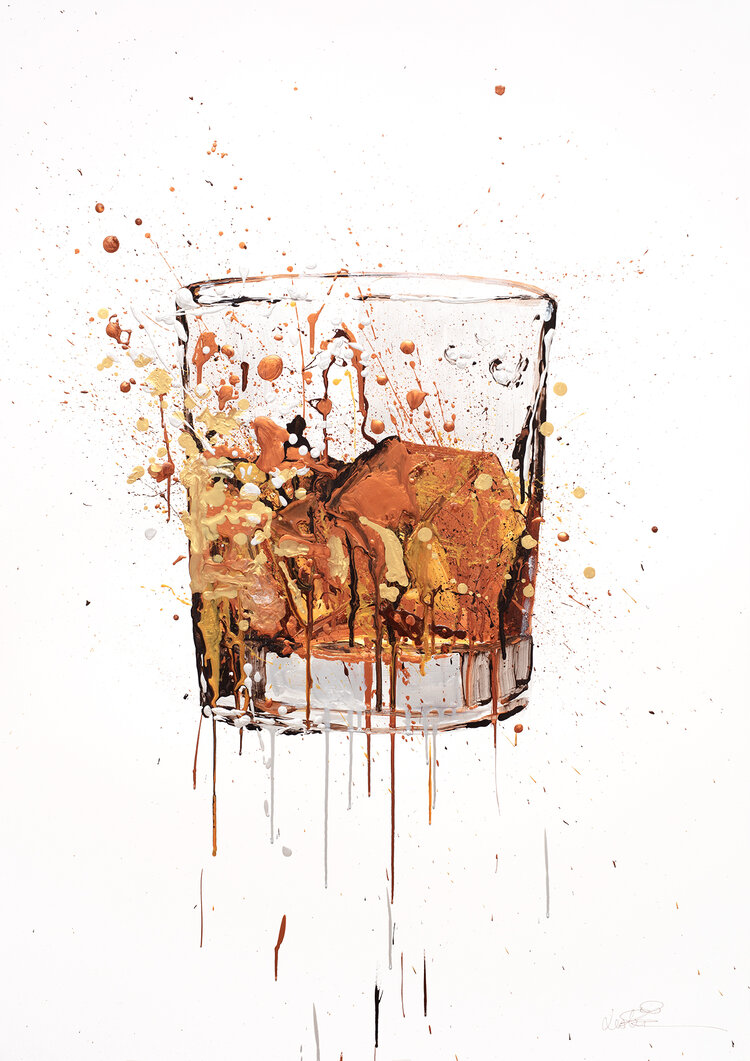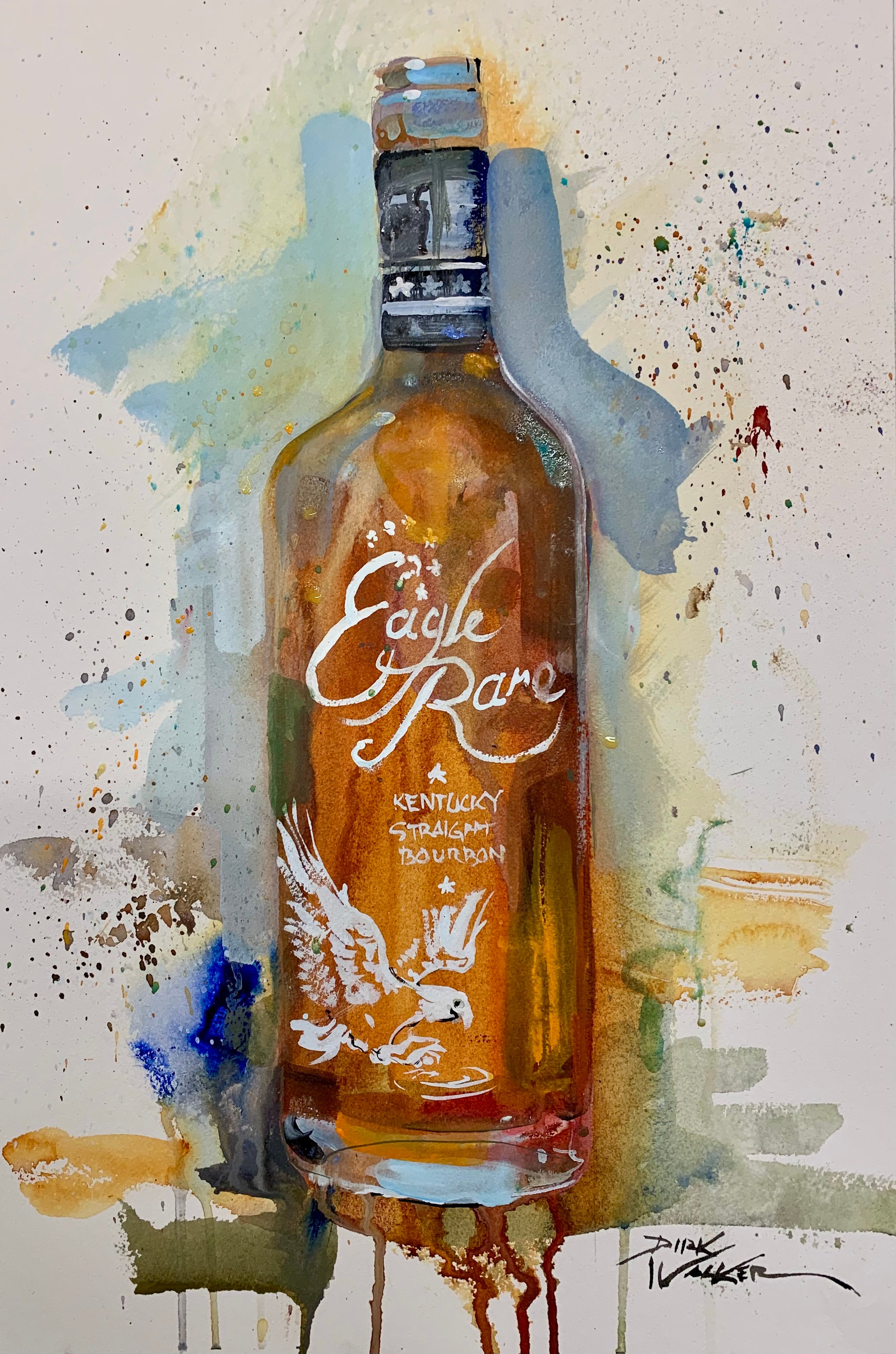Catching the Essence of Bourbon Art Through Distinct Visual Representations and Designs
The art of scotch extends beyond the liquid itself, materializing through a selection of visual depictions that envelop its storied heritage and craftsmanship. From the meticulous layout of tags that convey brand narratives to expressive photography that records the spirit's attraction, each artistic expression serves to boost the customer's journey. As the market accepts modern trends, the dialogue surrounding these depictions ends up being intricate and progressively abundant, meaning much deeper connections in between culture and imagination. What continues to be to be uncovered is just how these developing designs mirror not only the scotch itself but likewise the transforming landscape of artistic interpretation.
The History of Whiskey Art

As bourbon production spread, so too did the wish to boost its experience with art. From the detailed engravings on early casks to the intricate labels of contemporary containers, each aspect reflects an one-of-a-kind artistic vision, serving as an aesthetic story of the whiskey's heritage.
In the 19th and 18th centuries, the surge of the industrial transformation better boosted scotch art, leading to innovative packaging and advertising and marketing that recorded customer interest. Developers and musicians began trying out looks, imbuing whiskey-related images with symbolic definitions that conveyed notions of craftsmanship, custom, and community.
Today, whiskey art remains to advance, mixing conventional methods with modern art forms. Whiskey Art. This ongoing dialogue in between the spirit and its visual representation underscores the enduring bond in between bourbon and society, enhancing the general experience for enthusiasts worldwide
Iconic Bottle Layouts
While lots of aspects add to the appeal of whiskey, iconic container styles play an essential function fit customer assumption and enhancing the overall experience. The aesthetic presentation of whiskey containers is not just a visual consideration; it acts as a bridge in between the consumer and the product, stimulating emotions and setting expectations.
Distinctive forms, materials, and closures can elevate a bourbon brand's identity, making it instantaneously identifiable on crowded racks. The traditional Glenfiddich bottle, with its sophisticated tapered shape, conveys a feeling of tradition and workmanship, while the strong, contemporary design of the Balvenie container reflects technology and elegance. The use of tinted glass or distinct appearances can recommend the quality and personality of the whiskey within.
Renowned styles frequently incorporate components of social heritage, symbolizing the brand name's background and link to its roots. Brand Names like Jack Daniel's utilize a simple, durable layout that resonates with its American bourbon heritage. Eventually, the effect of container layout extends beyond plain functionality; it encapsulates the essence of the brand name, inviting consumers to delight and discover in the rich tapestry of scotch society.
Tag Art Work and Branding
Bottle designs typically set the stage for what consumers can expect, however label art work and branding play a just as substantial function in communicating a scotch's identity. The label functions as the initial factor of call between the item and the consumer, encapsulating the significance of the scotch within its visual elements.
Effective tag art work combines shade, images, and typography to produce a narrative that reverberates with the brand name's heritage and target market. A label including classic typefaces and elaborate illustrations might evoke a feeling of practice and workmanship, appealing to connoisseurs. On the other hand, you can check here strong shades and contemporary design components might draw in a more youthful market seeking development and exhilaration.


Digital Photography and Visual Narration
Recording the essence of scotch via digital photography and visual storytelling is an art type that raises the brand name experience. This medium transcends simple product depiction, diving into the detailed narratives that border each bottle. By employing compelling imagery, photographers can evoke feelings that resonate with customers, inevitably building a much deeper connection to the bourbon brand name.
Visual storytelling in whiskey photography frequently uses abundant appearances, lighting, and composition to highlight the one-of-a-kind features of the spirit. The interaction of light and darkness can emphasize the amber shades of scotch, while the choice of history aspects-- such as rustic barrels or sophisticated glass wares-- can strengthen the brand name's heritage or way of life associations.
In addition, capturing the ritualistic aspects of bourbon intake, from the pouring to the sampling, invites visitors into a sensory experience, permitting them to imagine the flavors and fragrances that wait for. Each photograph not only showcases official statement the item however likewise narrates of craftsmanship, practice, and the minutes that whiskey can enhance - Whiskey Art. Therefore, photography becomes a powerful device in expressing the identity of bourbon brands, placing them within the more comprehensive cultural landscape
Arising Trends in Bourbon Art
The development of whiskey art is increasingly formed by contemporary patterns that mirror more comprehensive societal shifts and consumer preferences. This change not just highlights the value of sustainability but additionally enhances the story surrounding scotch manufacturing.
Furthermore, digital art has actually risen in appeal, allowing for innovative depictions of bourbon. Musicians are leveraging innovation to craft immersive experiences, such as enhanced fact installments that involve customers and supply a much deeper understanding of whiskey's social value. This fad likewise reaches social networks systems, where aesthetically striking content amasses focus and promotes community amongst lovers.
In addition, collaborations in between scotch brands and musicians are coming to be a lot more commonplace. These partnerships generate limited-edition packaging layouts and exclusive artworks that commemorate both the workmanship of scotch and the creative thinking of musicians. As scotch art continues to advance, these arising fads will certainly form its future, promoting a vibrant junction of culture, sustainability, and technology within the scotch area.
Verdict
To conclude, the art of their explanation whiskey encompasses a varied variety of aesthetic representations that reflect its rich heritage and craftsmanship. From iconic container designs and elaborate tag artwork to engaging photography, each element contributes to a wider story that boosts the customer's experience. As arising fads, such as electronic art and sustainability, remain to shape this imaginative landscape, the multifaceted identity of scotch remains a withstanding resource of cultural connection and expedition.

In final thought, the art of whiskey encompasses a diverse array of aesthetic representations that reflect its abundant heritage and workmanship.